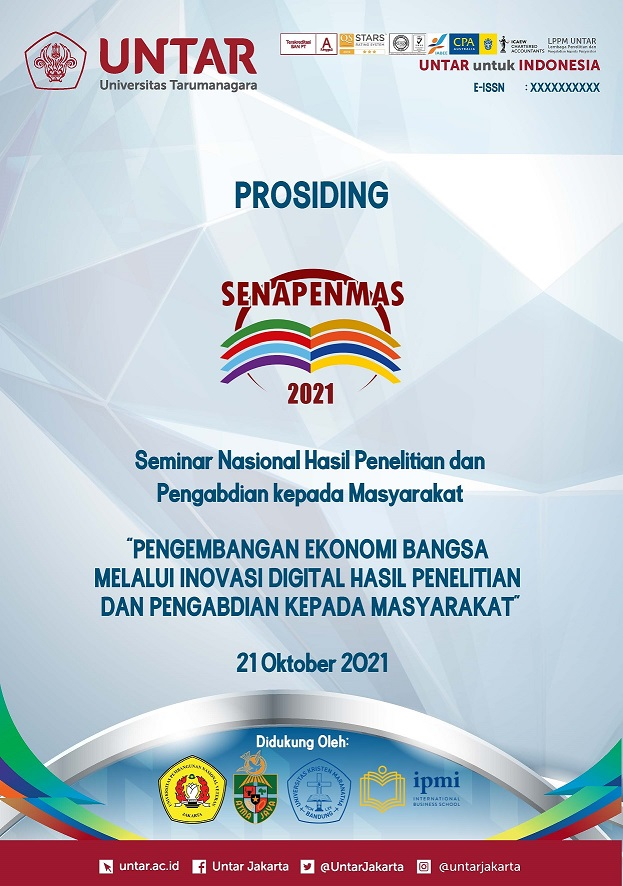PEMAKNAAN DAN PENGALAMAN SEBAGAI TRANSGENDER
Main Article Content
Abstract
This study aims to get an overview of the meaning and experience of being transgender. This study use a qualitative research method, researcher conducted interviews with two subjects, one female to male transgender subject and one male to female subject. This research we will see how the dynamics that transgenders go through and feel. The description of meaning and experience as transgender is seen based on the dynamics that occur in the lives of each subject. The results showed that each subject had a discrepancy between their gender identity and their biological gender identity and had different fluctuations since childhood, continued to develop as adults, but both chose to cover up their gender identity for fear of the consequences. This research can be used for additional information on health administration and education in educating the public about transgender needs. The results showed that the two subjects had similar meanings but different experiences.
Individu transgender adalah individu yang identitas gendernya berbeda dengan jenis kelamin biologis yang terberi, sehingga pemaknaan terhadap identitas gender dengan jenis kelamin biologisnya juga mengalami perbedaan dan seringkali memberikan penglaman yang tidak sederhana bagi individu tersebut. Oleh karena itu, tujuan dari penelitian ini adalah untuk mengetahui gambaran pemaknaan dan penglaman sebagai seorang transgender. Pendekatan kualitatif dilakukan terhadap satu orang transgender female to male dan satu orang transgender male to female yang dipilih secara purposive. Data untuk penelitian ini diperoleh dari wawancara semi terstruktur. Hasil penelitian menunjukkan bahwa kedua subjek memiliki pemaknaan yang serupa namun pengalaman yang berbeda.
Article Details
References
Afrasiabi, H., & Junbakhsh, M. (2019). Meanings and experiences of being transgender: a qualitative study among transgender youth. The Qualitative Report, 24(8), 1866- 1876.
Crooks, R., & Baur, K. (2005). Our sexuality (9th ed). Wadsworth.
Detik Health (2010, April 14). Makin Banyak Orang Bingung dengan Jenis Kelaminnya. Diakses November 1, 2020. https://health.detik.com/berita-detikhealth/d-1338393/makin-banyak-orang-bingung-dengan-jenis-kelaminnya.
Diamond, L. M., Pardo, S. T., & Butterworth, M. R. (2011). Transgender experience and identity. In Handbook Of Identity Theory And Research (pp. 629-647).
Erikson, E. H. (1993). Childhood and society (2nd ed). Norton & Company.
Fatmawati, F. (2019). Religiusitas waria di surabaya. Lakon: Jurnal Kajian Sastra dan Budaya, 8(2), 87-96. http://dx.doi.org/10.20473/lakon.v8i2.19778
Glock, C. Y., & Stark, R. (1968). American piety: The nature of religious commitment (Vol. 1). Helgeson, V. S. (2012). Psychology of gender. Pearson.
Kristiana, T. W. A., & Indrawati, E. S. (2018). Jalanan terjal sudah kujajal interpretative phenomenological analysis (IPA) tentang pengalaman stress coping pada transgender pasca coming out. Jurnal Empati, 6(3), 259-267.
King, M., McKeown, E., Warner, J., Ramsay, A., Johnson, K., Cort, C.,& Davidson, O. (2003). Mental health and quality of life of gay men and lesbians in England and Wales: controlled, cross-sectional study. The British Journal of Psychiatry, 183(6), 552-558.
Kumar, R. (2011). Research methodology: step-by-step guide for beginners (3rd ed). SAGE Publication.
Leary, M. R., & Hoyle, R.H. (2009). Handbook of individual differences in social behavior. The Guildford Press.
Lestari, I., & Sefitri, S. (2016). Konseling Bagi Populasi Transgender. Jurnal Konseling Gusjigang, 2(1).
Nevid, J. S., Rathus, S. A., & Green, B. (2005). Psikologi abnormal.
Ningsih, E. S., & Syafiq, M. (2014). Pengalaman menjadi pria transgender. Jurnal Penelitian Psikologi, 3(2), 1-6.
Poerwandari, E. K. (2013). Penelitian kualitatif untuk penelitian manusia. LPSP3UI.
Taylor, S. E., Peplau, L. A., & Seas, D. O. (2009). Psikologi sosial (ed 2). Kencana.


